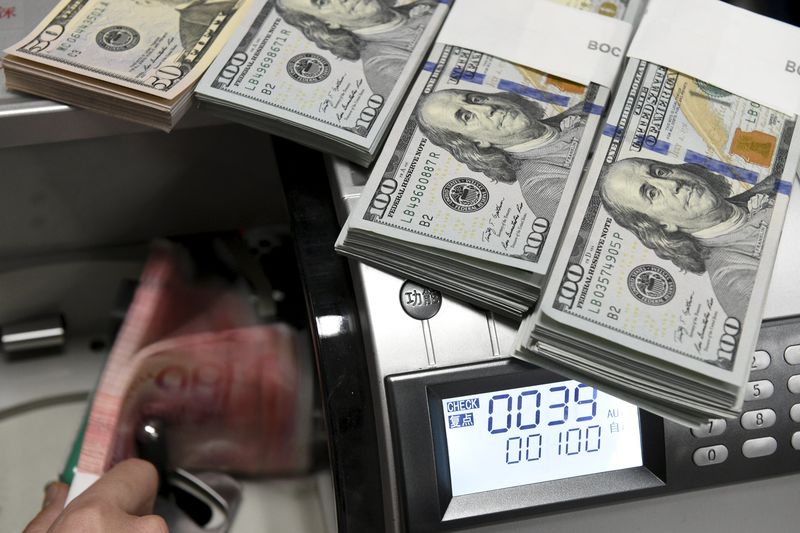By Peter Nurse
Investing.com -- The dollar edged lower in early European trade Wednesday, but retained underlying strength ahead of the conclusion of the latest Federal Reserve meeting, which is expected to reinforce expectations of interest rate hikes next year.
At 2:55 AM ET (0755 GMT), the Dollar Index, which tracks the greenback against a basket of six other currencies, fell 0.1% to 96.450, not far removed from last week's 96.954 high. It has gained around 0.5% this week.
USD/JPY edged lower to 113.69, EUR/USD climbed 0.1% to 1.1271, while the risk-sensitive AUD/USD climbed 0.3% to 0.7122.
GBP/USD rose 0.1% to 1.3245, gaining after U.K. consumer price inflation surged to an annual rate of 5.1% in November, its highest since September 2011, raising the pressure on the Bank of England ahead of Thursday’s policy-setting meeting.
The pound has been under pressure as Britain grapples with rising cases of the Omicron variant of the new coronavirus. Political uncertainty is also starting to make itself felt, with Prime Minister Boris Johnson’s authority undermined by a revolt within his party over the imposition of new restrictions.
However, the focus Wednesday is on the Federal Reserve, as the U.S. central bank wraps up its latest two-day policy-setting meeting later in the session.
Investors are expecting the Fed to accelerate the tapering of its bond buying program and probably moving up its projections for interest rate rises.
Currently, markets are expecting the Fed to wrap up bond-buying around March and then proceed with one or maybe two rate hikes in 2022.
“With the Fed having already met its average inflation goal, and the labour market likely at full employment, we judge that the Fed will start to hike the fed funds rate in June 2022,” said analysts at ABN Amro, in a note. “In total, we expect the Fed to raise the fed funds rate three times in both 2022 and 2023.”
Elsewhere, USD/CNY traded 0.1% lower at 6.3642, after data released earlier Wednesday showed that Chinese industrial production grew 3.8% year-on-year in November, an improvement from the previous month’s 3.5% growth.
Retail sales also grew 3.9% year-on-year, lower than October’s 4.9% growth, with Covid-19 restrictions weighing on consumer spending.
USD/TRY rose 1.8% to 14.6455, with the Turkish lira continuing to slide to record lows on concerns over President Tayyip Erdogan's unorthodox economic policy and prospects for another interest rate cut this week.
The lira slump has been driven by the Turkish Central Bank's 400-basis-point rate cuts since September, while the Federal Reserve looks set to hike interest rates in the not too distant future.
